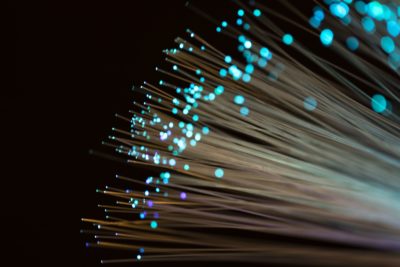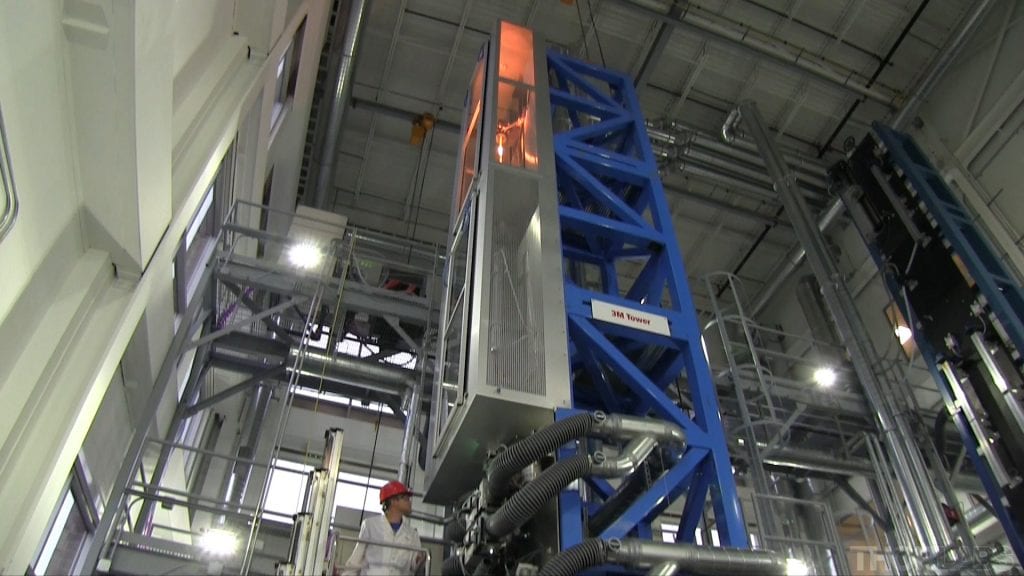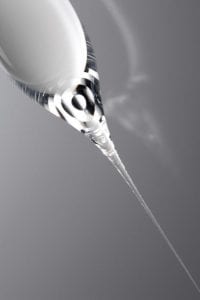Search this article
Precise and repeatable flow control in optical fiber manufacturing
Optical fiber manufacturers use Alicat mass flow controllers to optimize the preform manufacturing and fiber drawing processes. Here we introduce the optical fiber production process and discuss the role of mass flow and pressure control.


Optical fiber production process
Step 1: Making the preform
The optical fiber manufacturing process begins with the creation of a preform. In this process, various doping gases are used to add layers of pure glass to a cylinder. The final preform consists of a core and cladding, each with its own refractive index causing light to remain trapped within the core. Even slight imperfections or defects in the cladding can reduce the percentage of light transmitted or impair other cable properties. A rotameter or mass flow controller is used to precisely regulate fuel gases to maintain the optimal process conditions.
Step 2: Drawing the fiber
The preform is then placed into a draw tower to produce the optical fiber. One end of the preform is heated, and inert gases are used to shield the heating element from burning up during the process. Gravitational force causes a small drop of melted glass to begin to fall from the preform as it heats, forming the beginning of the optical fiber (often <500 um in diameter). Draw towers are often multiple stories high to ensure there is enough space for the fiber to stretch.

Fiber drawing tower. Photo: Copyright ThorLabs
Step 3: Quality control & ribbon coating

Drawn fiber. Photo: Copyright Heraeus
After drawing the fiber, its thickness is measured and quality checked. At that point, a thin coating of a polymeric or acrylic layer may be applied to the outside of the glass. This coating preserves the fiber properties and protects the pure glass from harmful environmental conditions.
The flow of the coating is generally regulated using pressure control. Given how thin the fiber is, the pressure control must be extremely accurate and repeatable over the length of the fiber to ensure consistent coating. Even tiny amounts of pressure fluctuation can lead to microns of variation in the overall thickness, dramatically affecting the overall performance of the fiber. The fiber is then cured using UV or thermal processes.
Alicat’s role in optical fiber manufacturing
As the preform is created, mass flow controllers regulate the flow of fuel gases used to heat up the preform and deposition of each new layer of glass. During the fiber draw, these controllers feed argon into the furnace area to shield the furnace element from burning. Finally, pressure controllers are used in the final coating process.
- Fiber optic cables are produced at a rate of about 90 feet per second, making rapid control response critical. With control response times as fast as 30 seconds, Alicat pressure and flow controllers maintain fiber quality by quickly compensating for external environmental fluctuations.
- Mass flow controllers simultaneously measure mass flow, volumetric flow, absolute pressure, and temperature – and can log historical data. This enables manufacturers to pinpoint environmental changes resulting in rejected batches, defects, or other quality issues in the process. This is particularly useful when manufacturing specialty fibers for high-energy applications requiring highly specific optical properties.
- Real-time data monitoring and easy integration into control systems mean consistent detection of spikes, zero-flow conditions, or other warning triggers. If there is a problem, the controllers can send signals to the PLC to shut down the line. This gives the tower operator a chance to identify the problem, fix it, and return to full operation.
The end result is greater repeatability and efficiency in the optical fiber manufacturing process, leading to a much better product and fewer lost batches along the way.
Discuss your process needs with an applications engineer